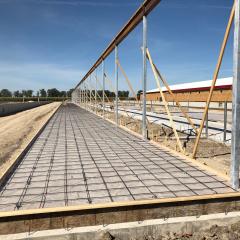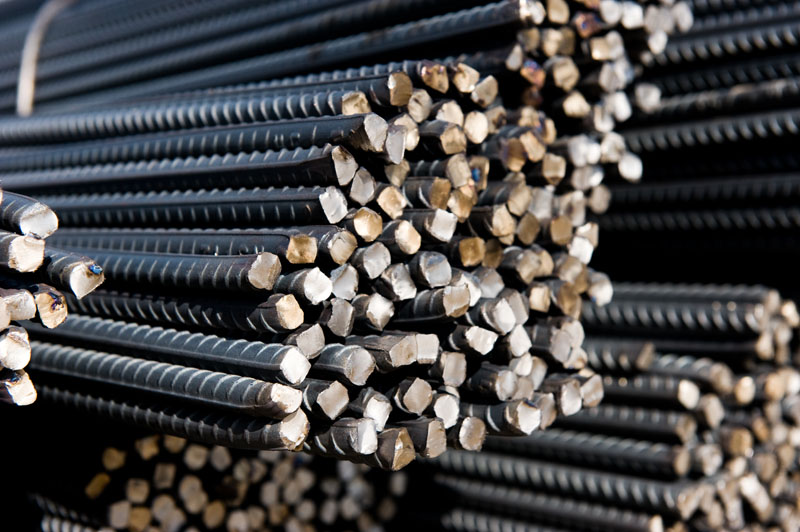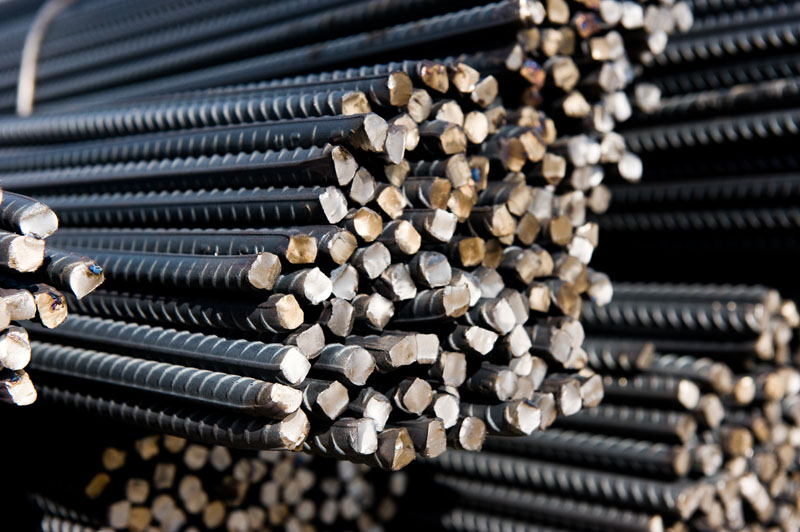AW Graham Lumber is your premier supplier of high-quality rebar and rebar accessories for home improvement and remodeling projects. We proudly serve Kentucky and surrounding regions, including Ohio, West Virginia, and Indiana, and are trusted by professionals and homeowners alike.
Choosing GrahamLumber.com for your rebar and rebar accessory needs means selecting a crucial construction material made from carbon steel. Rebar, short for reinforcing bar, typically features a ribbed or deformed surface. This design is essential for creating a strong mechanical bond with concrete. While concrete excels in compression (resisting pushing forces), it's relatively weak under tension (resisting pulling apart) and bending forces. Rebar is specifically designed to counteract this weakness by absorbing the tensile stresses that concrete alone cannot withstand, ensuring the longevity and stability of your structures.
Ideal
projects and applications for rebars:
- Foundations (Residential and Commercial): The foundation is the most critical part of any structure, bearing its entire weight. Rebar is embedded within poured concrete foundations (in footings, slabs, and walls) to provide essential tensile strength. This ensures the foundation can withstand settlement, soil movement, and the immense downward and lateral forces from the structure above, preventing cracking and ensuring long-term stability.
- Slabs (Floor Slabs, Pavements, Driveways, Patios): Concrete slabs, whether for a basement floor, a driveway, or a large industrial floor, are subject to significant live loads (people, vehicles, equipment) and environmental stresses (temperature changes). Rebar, often in a grid or mesh pattern, is placed within the slab to distribute these loads, prevent cracking due to shrinkage or expansion, and significantly improve the slab's load-bearing capacity and impact resistance.
- Beams and Columns: As primary load-bearing components in buildings, beams (horizontal) and columns (vertical) rely heavily on rebar. Beams experience substantial bending forces, with compression at the top and tension at the bottom. Rebar is strategically placed in the tensile zones of beams to manage these forces. Columns primarily experience compression but also bending, and rebar runs vertically within them to enhance their compressive strength and provide resistance to buckling and lateral forces. The rebar cage, formed by vertical bars and horizontal ties or spirals, is vital for column stability.
- Walls (Shear Walls, Retaining Walls, Masonry Walls): Concrete walls, particularly shear walls (designed to resist lateral forces like wind and seismic activity) and retaining walls (holding back soil), require significant reinforcement. Rebar is placed both horizontally and vertically within these walls to provide strength against bending, shear forces, and cracking from earth pressure or structural loads. Rebar can also be inserted into the voids of concrete masonry unit (CMU) walls and then filled with concrete (grouted) to create reinforced masonry, greatly increasing their strength and stability.
- Bridges and Overpasses: These large-scale civil engineering structures are exposed to extreme loads (heavy traffic, dynamic forces) and environmental conditions. Rebar is integral to every component—piers, abutments, decks, and girders—ensuring they can withstand immense compressive, tensile, and shear forces, as well as vibrations and fatigue over decades of use. The complex rebar cages within these structures are meticulously designed by engineers.
- Dams and Water-Retaining Structures: Structures designed to hold back water experience significant hydrostatic pressure. Rebar reinforcement is crucial for providing the necessary strength and crack control to resist these immense forces and prevent leaks or structural failure.
- Tunnels and Underground Structures: Tunnels and underground structures face earth pressure and potential seismic activity. Rebar provides internal reinforcement to resist these external pressures and maintain the structural integrity of the lining.
- Precast Concrete Elements: Many concrete components are precast in a factory (e.g., concrete pipes, panels, bridge sections). Rebar is incorporated into these elements during the casting process to give them the required strength and durability for handling, transport, and installation, as well as for their intended structural function.
- Decorative and Artistic Projects (DIY and Professional): Beyond structural applications, rebar's rugged, industrial aesthetic and workability (it can be cut, bent, and welded) make it a popular material for various artistic and decorative projects. This includes garden trellises, fire pits, wine racks, furniture frames (coffee tables, benches), wall art, and even sculptures. Here, rebar's inherent strength and appearance are leveraged to create durable and visually interesting pieces.
Don't compromise on the structural integrity of your builds across Kentucky, Ohio, West Virginia, or Indiana. While concrete alone can crack and fail under tension, with AW Graham Lumber's superior
rebar and rebar accessories, you can build with confidence, knowing your structures will stand the test of time. We offer a comprehensive
selection of steel rebar and shapes products as part of our complete building supply inventory. You can also browse our wide selection of top-quality
steel rebar and shapes including
key stock and flat steel,
nail stakes,
threaded rod,
wire panels, and many more. Secure the foundation of your success—explore our rebar solutions online now or contact our team for immediate assistance with your project requirements!















